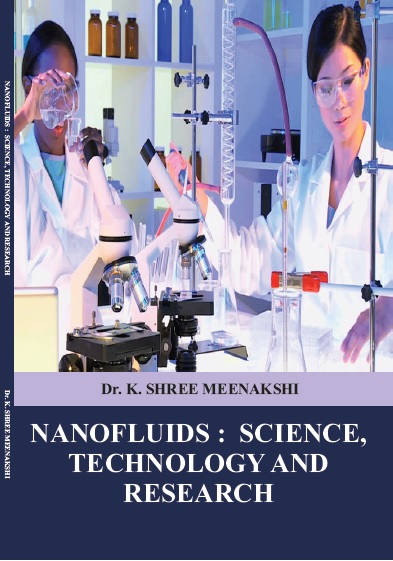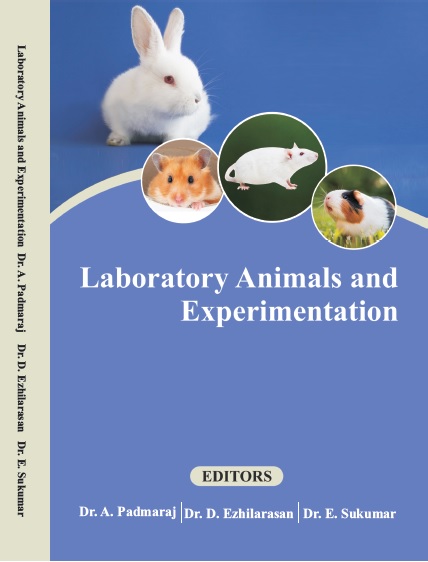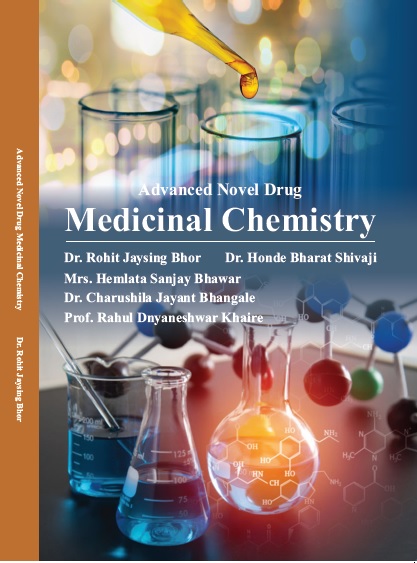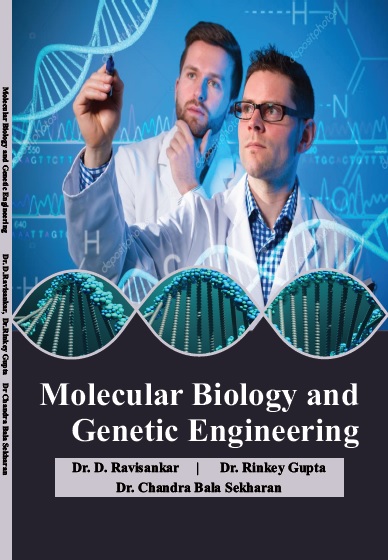SCIENCES AND ENGINEERING

Nanofluids : Science, Technology And Research
by Dr. K. SHREE MEENAKSHI
ISBN Number : 978 - 1- 73041 - 922 - 5
Authors Details
| Author Name | Image | About Author |
|---|---|---|
| Dr. K. SHREE MEENAKSHI |  |
Dr. K. SHREE MEENAKSHI was born in the Madurai District of Tamil
Nadu. She received her Bachelor's Degree in Chemistry with First Class from
Madras University, Tamil Nadu. She obtained her Master's degree in Applied
Chemistry with First Class and Master of Philosophy in Chemistry with First
Class-Distinction from Anna University, Chennai, Tamil Nadu. She has also
received her doctorate from Anna University, Chennai by doing extensive
research in the field of polymer nanocomposites and studying their suitability
for high performance aerospace and advanced engineering applications. She has worked as a JRF
(Junior Research Fellow) in DST (Department of Science and Technology) project and she has received
SRF (Senior Research Fellowship) from CSIR for her contributions to advanced research. She has done
several projects in National Metallurgical Laboratory (NML), CSIR Complex, Taramani, Chennai. She
has presented her work in several national & international conferences and published her research work
in several reputed international journal of high impact factors. Currently she is working as an Assistant
Professor in the Chemistry Department of Loyola-Icam College of Engineering and Technology
(LICET), Chennai. She loves teaching and interacting with students. Personally she is a young mother
with a little baby who keeps her active always. She lives with her husband and little son in Chennai. |
Book Description
A wide variety of industrial processes involve the transfer of heat energy. Throughout any industrial facility, heat must be added, removed, or moved from one process stream to another and it has become a major task for industrial necessity. These processes provide a source for energy recovery and process fluid heating/cooling. The enhancement of heating or cooling in an industrial process may create a saving in energy, reduce process time, raise thermal rating and lengthen the working life of equipment. Some processes are even affected qualitatively by the action of enhanced heat transfer. The development of high performance thermal systems for heat transfer enhancement has become popular nowadays. The advent of high heat flow processes has created significant demand for new technologies to enhance heat transfer. There are several methods to improve the heat transfer efficiency. Some methods are utilization of extended surfaces, application of vibration to the heat transfer surfaces, and usage of micro channels. Heat transfer efficiency can also be improved by increasing the thermal conductivity of the working fluid. Commonly used heat transfer fluids such as water, ethylene glycol, and engine oil have relatively low thermal conductivities, when compared to the thermal conductivity of solids. High thermal conductivity of solids can be used to increase the thermal conductivity of a fluid by adding small solid particles to that fluid. Nanofluids are basically a suspension of solid nanoparticles (1-100 nm diameter) in conventional liquids like water, oil, diesel, ethylene glycol etc. These distributed nanoparticles, generally a metal or metal oxide greatly enhance the thermal conductivity of the nanofluid, increases conduction and convection coefficients, allowing for more heat transfer. The emergence of nanofluids as a new field of nano scale heat transfer in liquids is related directly to miniaturization trends and nanotechnology. Nanofluids owe its history to the Advanced Fluids Program (AFP) at Argonne National Laboratory (ANL) that encompassed a wide range (meters to nanometers) of size regimes and eventually the wide research road became narrow, starting with large scale and descending through micro scale to nano scale, culminating in the invention of nanofluids. The goal of nanofluids is to achieve the highest possible thermal properties at the smallest possible concentrations by uniform dispersion and stable suspension of nanoparticles in host fluids. When used as coolants, nanofluids can provide dramatic improvements in the thermal properties of host fluids. The novel nanofluids enable a more efficient, effective and uniform heat removal capability for systems requiring highly accurate temperature control at high heat fluxes. Nanofluids are attracting a great deal of interest with their enormous potential to provide enhanced performance properties, particularly with respect to heat transfer. This book deals with the science and technology of nanofluids. The introduction to nanofluids, stability, diversity of nanofluids, concept of heat transfer in nanofluids, characterization, and challenges and finally the applications and future perspectives of nanofluids are discussed. I am sure that this book would be of great benefit to the student and the researcher's community. I take this opportunity to thank the management of Loyola- ICAM College of Engineering and Technology (LICET) for their support in all my endeavors, my students both in CEG, Anna University and LICET for their inspiritment. My baby son S.P.VIHAAN for inspiring me to write this book, my husband E.PRADEEP for being my pillar of strength, my mother K.VASANTHI and my father M.KUMAR for urging me to publish books that would benefit the student community. I am also grateful to K.VINAYAK, K.KARTHEESWARAN and K.NISHA for their encouragement.














